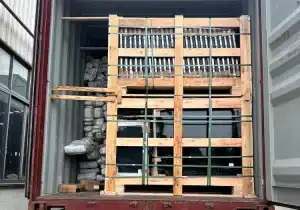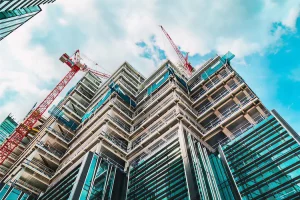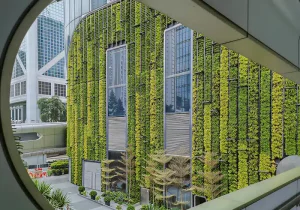
The Hidden System Behind Cross-Border Facade Delivery
The Hidden System Behind Cross-Border Facade Delivery When people admire the shape of a tower or the clarity of a glass facade, few notice the

Over the past few decades, the designs and technology of curtain wall has developed into a diversified system. Innovation on materials from the traditional ones like glass, aluminum panels, and stone to the modern ones such as terracotta panels and titanium-zinc sheets, continues to drive the field forward. As one of the significant parts of a building’s envelope system, curtain walls have following features:
1.1 They can form a complete structural system to protect the interior building to a certain extent and also guarantee the stability.
1.2 What’s more, they only need to hold their own weight because they are independent of the building’s primary structure.
1.3 Most obviously, they play a decisive role in shaping the building’s exterior appearance.
The façade is in fact an interface between a building and its external environment. Therefore, its design should adhere to the following points:
2.1 Conceptual Expression
The facade design should reflect the building’s function and aesthetic vision.
2.2 Visual Impact
The elements of facade must Harmonize color, texture, proportion, and rhythm.
2.3 Cultural Relevance
The design must align with the local mainstream aesthetics and cultural context.
After learning about the key elements in the facade design, let’s dig into the core principles of curtain wall design further.
☛ As a modern element, there is no doubt that the curtain wall design should keep abreast with the prevailing design trends.
☛ Besides, it is also necessary to utilize innovative materials and technologies in the curtain walls.
☛ It’s better to keep forward-thinking without being overly radical in the curtain wall design.
☞ In order to integrate with the local community, the design should respect local architectural traditions.
☞ In addition, it must incorporate the specific cultural elements.
☞ What is also important is that the design can respond to regional climate conditions.

☞ It is not recommended to be too unique in curtain wall design. It must balance individuality with universality.
☞ The design should take the public acceptance into account.
☞ Finally, maintaining harmony with the surrounding environment is also very necessary.
Now, you may wonder why the curtain wall design must follow those rules and why it is so critical for the modern architecture. So let’s find out its practical value.
☞ Inspire architects with broader creative possibilities
☞ Offer technical expertise
☞ Optimize design details and integration
☞ Minimize conflicts between design and structure
☞ Control construction costs
☞ Ensure project timelines are met
☞ Unify performance and visual expression
☞ Enhance overall building quality
☞ Improve user experience and satisfaction
Curtain wall design has evolved beyond mere decoration to become a critical factor influencing the overall quality of architecture. The successful one must balance contemporary relevance, regional identity, and public expectations, while leveraging technological innovation to unify function and form. As curtain wall systems continue to advance, they will open up new possibilities for creative and high-performance architectural design.

The Hidden System Behind Cross-Border Facade Delivery When people admire the shape of a tower or the clarity of a glass facade, few notice the

What Developers Really Look for in Façade Partners — and Why It Matters Picking the right façade partner may look easy at first. However, anyone who’s handled a

Green Building Trends: Aluminum vs. Stainless Steel for Living Façades As green building shifts from trend to standard, the building’s “skin” is undergoing a transformation.

Burj Al Mana Tower: The Story Behind Its Complex Façade and Engineering Rising over Doha’s West Bay, the Burj Al Mana Tower has a story